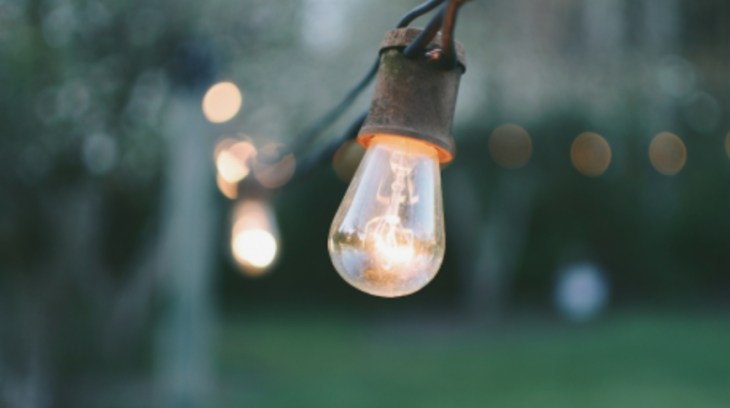
The country is getting more expensive, utility bills are going through the roof and many people this winter will have their utilities stopped due to people not being able to afford their bills. With this in mind, it is time to start preparing for the winter by doing a couple of things around the house in time for those cold days. Heating and cooling are two of the most energy-consuming elements in your home.
Everyone is also trying to be more sustainable, but as the nights get colder, it is all too easy to put the heating on. This won’t be the case this year as people are trying to save money where possible. In this article, we will go through some top tips for saving energy this winter.
Switch To LED Lightbulbs
One of the easiest places to start saving energy is through your lighting. Traditional bulbs are a thing of the past and have been replaced by LED lights. LED lightbulbs will use over 75% less energy than a standard bulb which is exactly what you want this winter as they last around 25 times longer too. Although LED bulbs are slightly more expensive than standard bulbs, LED will cost you much less in the long run.
In the winter, many people get the seasonal affective disorder. This is caused by shorter daylight hours and darker days with no sun. Artificial light has shown results to tackle this. LED lights will enable you to keep the light on without having to worry about your electricity bill due to LED bulbs using less energy.
Turn down The Thermostat
It’s going to get colder soon, so this means that you are going to be more tempted to turn up the heating. Room thermostats prevent the home from getting too hot or too cold. The thermostat will turn your heating on until it reaches the temperature set on the thermostat and will then turn it off when the temperature is reached.
The thermostat should not be set too high as this is going to use a lot of energy and cost more money than needed. Instead, set your thermostat between 18°C and 22°C for a comfortable temperature. Don’t be tempted to turn up the thermostat when it gets cold outside, your thermostat will heat to the set temperature all the time.
When you turn down your thermostat by just 1°, you could be saving up to £60 on the heating bills and 310kg of carbon dioxide per year from your carbon footprint.
Eliminate Air Leaks and Drafts
Most people will have at least one draft in their home. Covering these draft holes should be a priority before the winter comes in. Air sealing is effective, relatively cheap and easy to install. If you have any cracks and openings between stationary objects such as window frames, caulk should be used. If you have any moving objects such as your door, then weatherstripping around anything that moves will help to exclude drafts. Caulking and weatherstripping are fantastic, and they will pay for themselves within the first year of installation. Here are some tips for other areas:
External Doors
Doors are a massive contributing factor to drafts. When one has a drafty door, check the weather stripping on the doors as well as any other seals. If any are missing or damaged, repair and replace with new caulk to fix broken seals.
Windows
The other main contributor to drafts and heat loss is, of course, windows. There is a range of methods to exclude drafts from windows. The first is to purchase some curtains. Curtains will help to absorb the heat in the room and exclude any drafts. The next method that should be used in combination with curtains is to insulate the windows in winter by sealing frames with a plastic cling wrap that can be purchased from most home DIY stores. This is extremely inexpensive and it will save you money and energy whilst also keeping you warm in your home.
Attic and Basement
Attics and basements contain a lot of air leakage, so it is essential to thoroughly check for any cracks or large holes in the floors or roof. These can significantly increase your energy bills due to the heat going out of them. When you find small cracks, use caulk to seal them up. If you have larger holes, then you will need to reinsulate the area.
Unexpected Heat Leaks
Doors and windows are the two sources of drafts that are pretty obvious, but there are other areas that leave gaps and increase drafts and air leakage. It may surprise you, but electrical outlets, light fixtures and gaps in your insulation.
If you have a fireplace, putting the fire on is a great way to keep warm and cosy. Although it can keep you warm, it can also let in a lot of cold air from the chimney. To remedy this, ensure that your damper is closed when not in use. If you don’t use your fire, have the chimney plugged and sealed so it excludes any draft.
Keep Internal Doors Closed
Were you born in a barn? Isn’t that what your parents used to say when you left the door open? This is now more important than ever, so keep all of your doors closed when you are not in a room as this will help to use a lot less energy when you are trying to warm the house up.
To further ensure your room are warm and cosy, place thick mats near the door to ensure no heat is escaping through the gaps under the door. Alternatively, place the mat in the middle of the room and then purchase draft excluders for the door.
Replace That Ineficiant Boiler
Old boilers use a lot of energy and are simply not efficient. Modern bikers on the other hand are much more efficient and can save you a lot of money in the long run. If you have a boiler that is over ten years old, then it needs replacing with a condensing boiler.
The costs for a new boiler vary significantly as it depends on the type of boiler you choose as well as the fixtures etc. For a standard boiler, it will cost around £2500 whereas an oil boiler will cost a little more than £3,000.
Insulate Pipes To Keep Water Warmer For Longer
Pipe insulation can help to reduce the amount of heat lost in your home. This insulation will keep your water warmer for longer which in turn reduces the amount of energy used needed to heat the water up.
This insulation includes a foam tube that covers pipes that are exposed between the hot water cylinder and the boiler. It is really simple to install, the hardest part is finding the correct size at your nearest home DIY store and then slipping them onto the exposed pipes.
This can often be done by yourself, but if you have hard-to-reach areas, having a professional do it can save you time and stress. Having pipe insulation can save up to £10 a year on energy bills.
There are many methods and tricks out there to help you save energy this winter. It just involves some research and a little bit of graft to get it done. Once you have followed these tips, you will notice your home becoming warmer for longer with no drafts keeping you cold.






